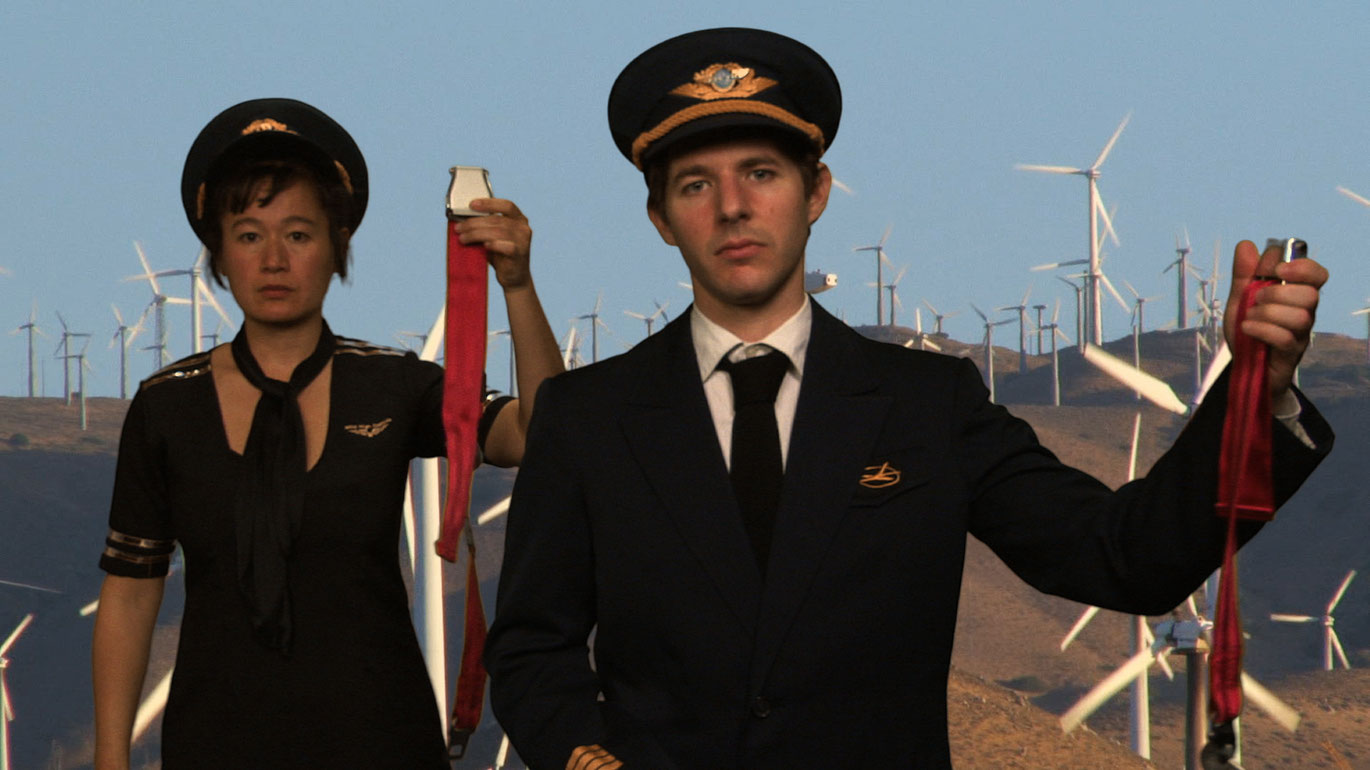In Free Fall
In the course of the cascading images of In Free Fall, the filmmaker herself appears; reading her text about the changeability of technical things. While speaking, she makes an error. Instead of saying that things continue to live, she says that they continue to love. The montage grasps this slip of the tongue (also a free fall), and turns it into a glitch. Reiteration of the error, which is celebrated like a hip hop sample, becomes just as programmatic as its content, considering polymorphous life and love as one – with devotion and unpredictable attraction.
In line with Sergej Tretjakov´s concept of a "biography of an object" from 1929, the film spins out a technological history full of allure and recursion. Howard Hughes´ Hell´s Angels-aerial warfare action-film stunts in the crash year 1929 introduce the life and love cycles of things (of means of transportation that are images, that is, media): from Hughes´ Airline TWA, which sold its Boeings to the Israeli air force, to the jets´ use in freeing the hostages in Entebbe 1976, on to feature film versions of the rescue through to the next life of the jets as air force museum pieces for the movies, that is, as ruins at a Californian desert airport (the owner gladly rents out his jets for film shootings, for example, for the shooting of Speed).
Steyerl´s cycles of motifs and stories are incredibly mad and inescapably similar to the cycle of capital: model of all things that live spectacularly, especially of love and crisis.
A lot of this seems familiar, not only the found footage and crash metaphoric: from films by Wyler, Grimonprez, and Bitomsky (fascination with airplane wrecks), Farocki (the Voice over inflection) or Steyerl herself (upheaval/contortion of politics as cinema image). And that makes sense: The final credits announce "Recycler" rather than "Director". And from time to time, the transformations of interviews to clownery, of images to labels, planes to discs, and bubbles to balloons, are packed so densely, are so full of steamy sense, it takes our breath away.
(Drehli Robnik)
Falling is a transition. It is a movement from one position to another. In as much as it suggests failure or ruin, to love is also to fall. It is corruption, revolution and abandonment. It implies a relationship. Hito Steyerl´s In Free Fall charts a singular object, the Boeing 707-700 4X-JYI airplane, in this process of falling. Less the story of an object´s production and eventual obsolescence, In Free Fall documents a life made visible through consecutive moments of destruction. Gil Leung
In Free Fall incorporates a trio of works: Before the Crash, After the Crash and Crash, which tell the story of the current global economic crisis through the example of an aeroplane junkyard in the Californian desert. The aeroplane junkyard reveals the anatomy of all sorts of crashes: both fictional and real. This is an investigation of planes as they are parked during the economic downturn, stored and recycled, revealing unexpected connections between economy, violence and spectacle. An example of this is the Boeing 4X-JYI, first acquired by film director Howard Hughes for TWA, which then flew for the Israeli Airforce before it was blown up for the Hollywood blockbuster, Speed. But the economic crisis doesn´t stop short of affecting the film industry either.
Through intertwined narratives of people, planes and places Steyerl reveals cycles of capitalism incorporating and adapting to the changing status of the commodity, but also points at a horizon beyond this endless repetition.
(Prod. Note)
In Free Fall
2010
Germany
32 min

